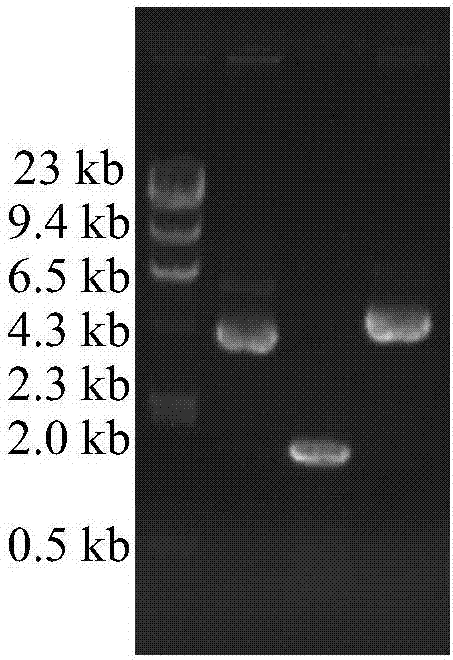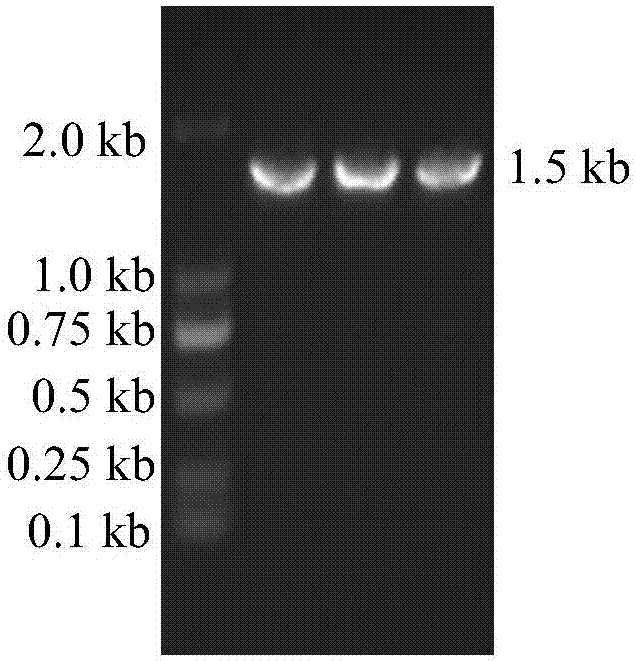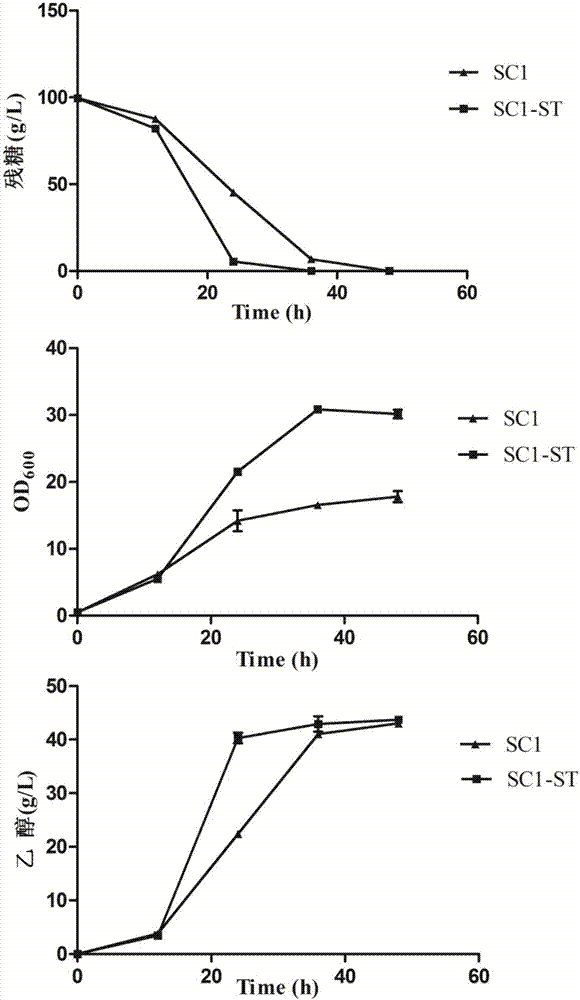Method for improving sucrose fermentation performance of Saccharomyces cerevisiae and application thereof
A technology of Saccharomyces cerevisiae and sucrose, which is applied in the field of genetic engineering, can solve problems that have not been reported, and achieve the effects of increased ethanol yield, efficient fermentation of sucrose to produce bioethanol and rare biochemical products, and increased sucrose consumption rate
- Summary
- Abstract
- Description
- Claims
- Application Information
AI Technical Summary
Problems solved by technology
Method used
Image
Examples
Embodiment 1
[0027] Example 1 : Construction of expression vector pRS6K-sut1 containing sucrose transporter gene sut1
[0028] The target gene sut1 was obtained by PCR technology, with a size of 1551bp (PCR upstream primer: 5'-aaaacaggatccccc AAAA ATGGAGAATGGTACAAAAAAG-3', downstream primer: 5'-gaattcctgcagcccTTATTTTAATGGAAAGCCCCATG-3', the lowercase part is the sequence homologous to the vector, and the underlined part is the Kozak sequence. The PCR reaction program was: 98°C pre-denaturation for 3 minutes, 98°C for 10s, 53°C for 15s, 72°C for 2min, 30 cycles, and finally 72°C extension for 10 minutes), and then the linearized expression vector pRS426K was digested with restriction endonuclease SmalⅠ, The size is 6636bp.
[0029] Finally, using TaRaKa's HD Cloning Kit connects two DNA fragments, transforms Escherichia coli JM109 competent cells, screens positive transformants on LA-resistant plates containing 100 mg / mL ampicillin, and then sends the positive transformants to Huada ...
Embodiment 2
[0030] Example 2 : Construction of recombinant yeast strain SC1-ST expressing sut1 gene heterologously
[0031] Saccharomyces cerevisiae S.cerevisiae INVSC1 was used as the starting strain, and the expression plasmid pRS6K-sut1 containing the sucrose transporter gene and the empty plasmid pRS426K were transformed with lithium acetate (Gietz and Schiestl, 2007, Quick and easy yeast transformation using the LiAc / SS carrier DNA / PEG method, Nat.Protoc., 2(1):35-37) were introduced into S.cerevisiae INVSC1 respectively, and positive transformants were screened on the screening plate.
[0032] The screening plate medium is uracil (URA) auxotroph: YNB yeast basic nitrogen source 6.7g / L, glucose 20g / L, histidine 30mg / L, leucine 60mg / L, tryptophan 30mg / L, The culture temperature is 30°C, and the culture time is 3-5 days. Select transformants from the selection plate, and obtain positive recombinant strains after colony PCR verification (PCR reaction program: 98°C for 10 minutes, 98...
Embodiment 3
[0034] Example 3 : Detection of sucrose fermentation performance of strain SC1-ST under the condition of sucrose as the only carbon source
[0035] (1) Streak the Saccharomyces cerevisiae strain SC1-ST on the YPD solid plate (YPD solid medium composition: peptone 20g / L, yeast powder 10g / L, glucose 20g / L, agar powder 15g / L), and place it in 30 Cultivate in a constant temperature incubator at ℃ for 3 days, select a single colony and inoculate it in the seed medium for overnight culture (seed medium composition: peptone 20g / L, yeast powder 10g / L, glucose 20g / L), and continuously transfer and activate the culture for 2 Second-rate.
[0036] (2) Inoculate the above-mentioned activated bacterial strain SC1-ST in 100mL sucrose fermentation medium (fermentation medium components: peptone 20g / L, yeast powder 10g / L, sucrose 10% and 20%), initial cell OD 600 The value is 0.5, cultured at 30° C. and 100 rpm, and samples are taken regularly for detection. Each experiment was done in 3 ...
PUM
 Login to View More
Login to View More Abstract
Description
Claims
Application Information
 Login to View More
Login to View More - R&D
- Intellectual Property
- Life Sciences
- Materials
- Tech Scout
- Unparalleled Data Quality
- Higher Quality Content
- 60% Fewer Hallucinations
Browse by: Latest US Patents, China's latest patents, Technical Efficacy Thesaurus, Application Domain, Technology Topic, Popular Technical Reports.
© 2025 PatSnap. All rights reserved.Legal|Privacy policy|Modern Slavery Act Transparency Statement|Sitemap|About US| Contact US: help@patsnap.com



